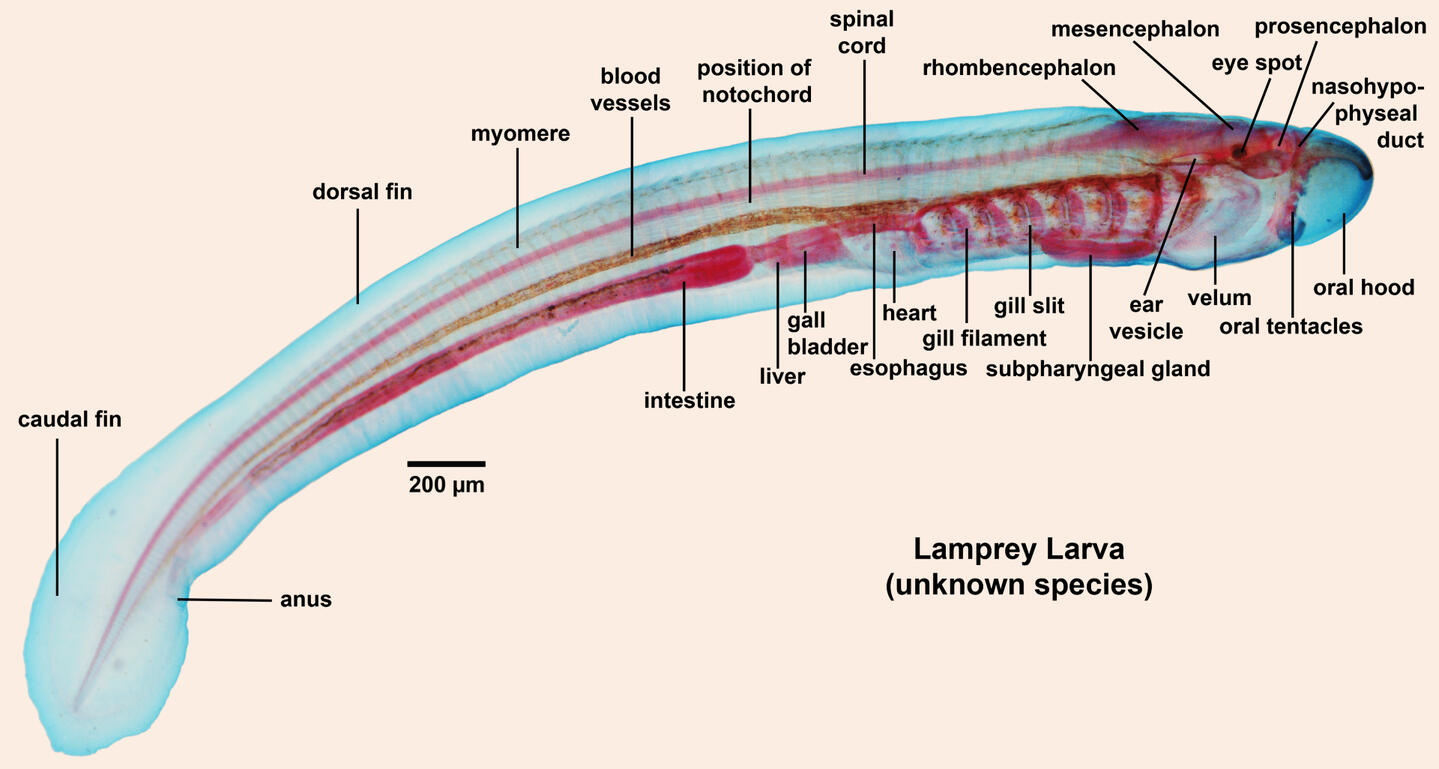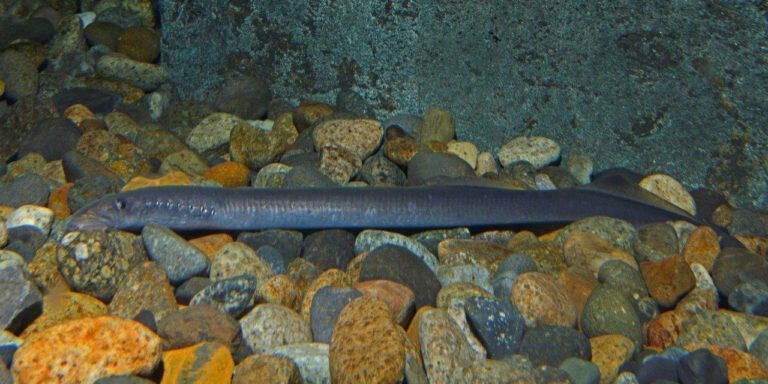Cyclostomata

Petromyzon marinus, commonly known as the sea lamprey
Cyclostomata is used to refer to extant species of jawless fish, while Agnatha is used to refer both extant (including cyclostomes) and extinct species. Agnatha is a sister group of the jawed vertebrates Gnathostomata. Cyclostomata is comprised of two families: hagfishes and lampreys.
They possess cartilaginous skeletons and a prominent notochord. Agnatha literally means "no jaws," and both hagfishes and lampreys are jawless fish. They are also the only fish without paired fins.
Like cephalochordates and urochordates, fossils of cyclostomes are rare due to their cartilaginous skeletons that do not fossilize into bone.
Hagfish

Of class Myxini, hagfishes are exclusively marine species. They are sometimes referred to as slime eels (although not actually eels) or slime hags due to the copious amounts of mucus they produce from their slime glands, usually as a response to provocation or stress.
Hagfishes can be found mostly in deep waters, both in temperate and cold-temperate oceans. They have low metabolic rates and oxygen is known to be able to enter through their skin. As osmoconformers, they are the only known vertebrates to be isosmotic with their environment (i.e. seawater). Unlike lampreys, hagfishes are mostly deep-sea scavengers.
They undergo direct development and have no larval stage.
Lamprey

Many lampreys are marine and most are ectoparasites on fish. They make use of a circular, sucker-like mouth to attach themselves to their hosts and rasping, tooth-like structures to grind into their flesh.
The mating system of lampreys is generally polygynandrous, where both males and females have multiple mates. Some species are anadromous, migrating upwards to streams in order to spawn, which is the most intense during spring.
Lamprey larvae (known as ammocoetes) are free-living filter-feeders, living for up to seven years before growing up to 15 cm in length and metamorphosing into an adult. This stage comprises around 60-80% of their whole lifespan.
Examples

Lethenteron japonicum, commonly known as the Arctic lamprey
Hagfishes are composed of some 80 species of class Myxini and order Myxiniformes. They are classified into six genera, although the organization of the genera is often changed.
The largest known species of hagfish is Eptatretus goliath, reaching up to 127 centimeters or around four feet and two inches.
Lampreys are composed of some 40 species of the order Petromyzontiformes, classified into three families Geotriidae, Mordaciidae, and Petromyzontidae. Petromyzon marinus (shown here) and Lethenteron japonicum (shown above) account for most published studies regarding lampreys.
Lethenteron japonicum (now reclassified as Lethenteron camtschaticum) is commonly known as the Arctic lamprey or the Japanese lamprey. They are commonly found in fresh water, although some are anadromous.
Cyclostomata in the philippines
Few species of hagfish have been found in Philippine waters. These include Eptatretus strahani from the West Philippine Sea near Lubang Island, Mindoro and Eptatretus fernholmi near Atalaya Point, Samar.
Little information is known about lampreys in the Philippines.